(4156 products available)



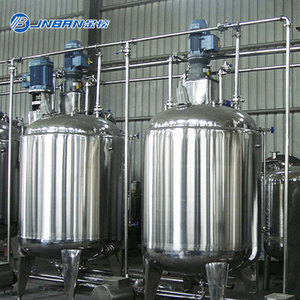





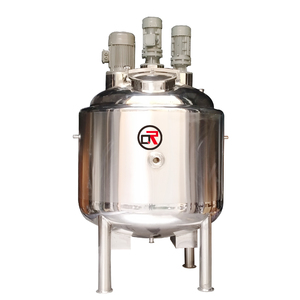


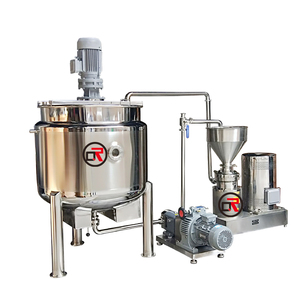


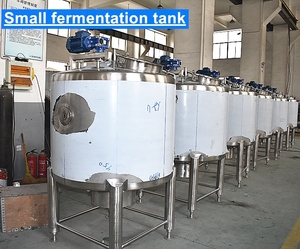




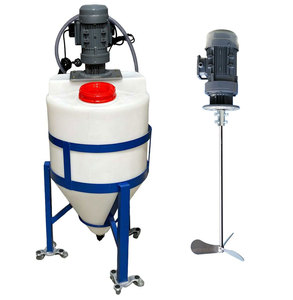












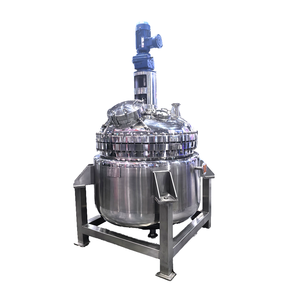
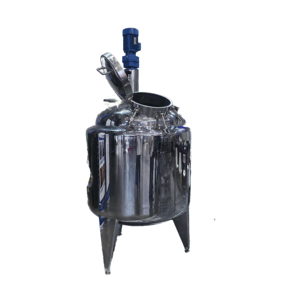


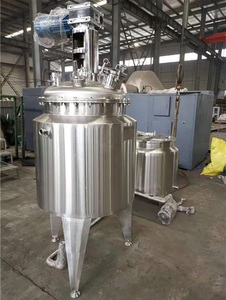








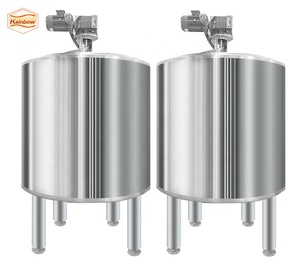
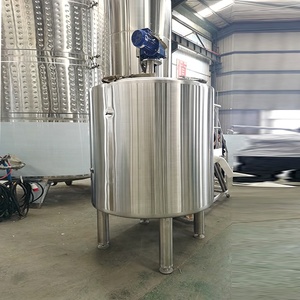

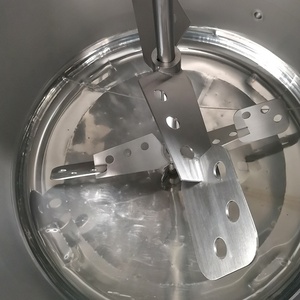













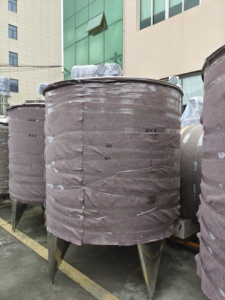

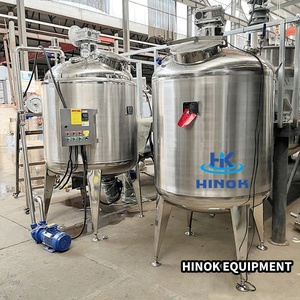

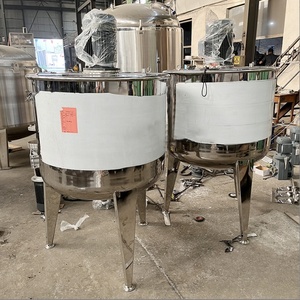
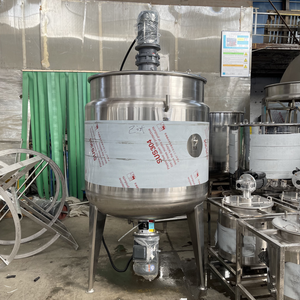




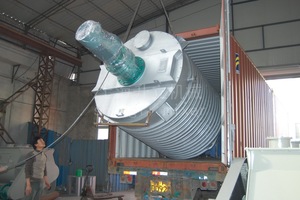

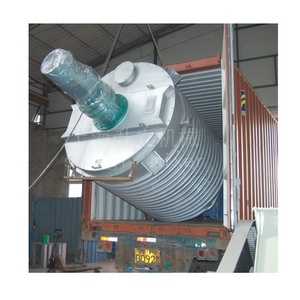


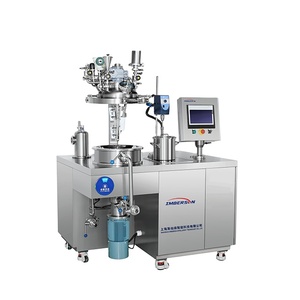
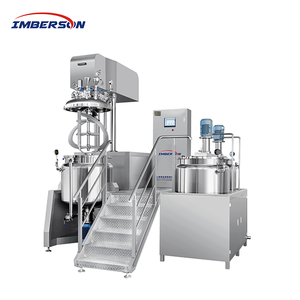




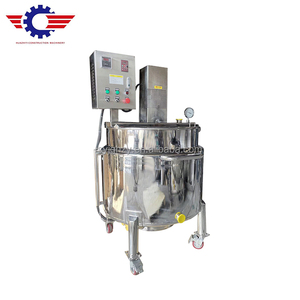


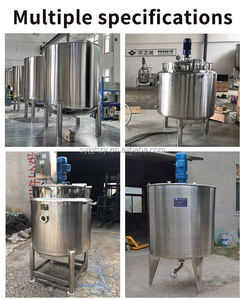


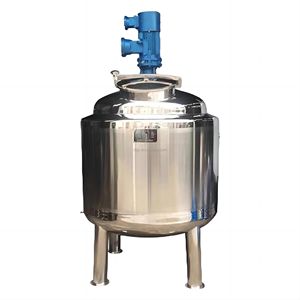

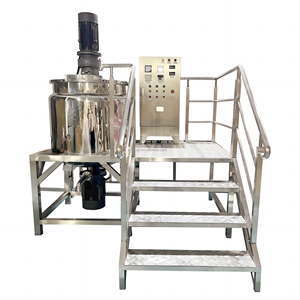















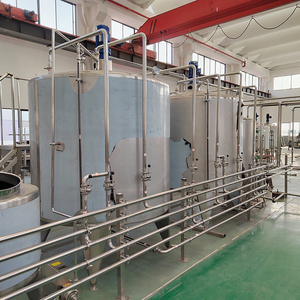









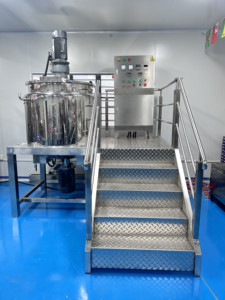







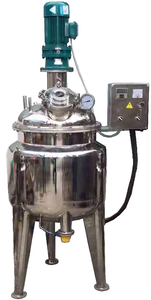






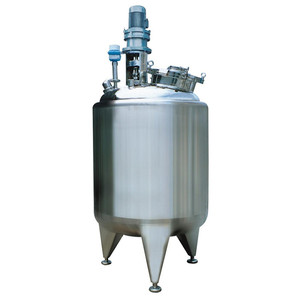





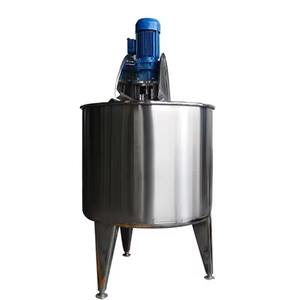


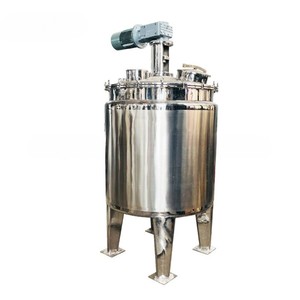
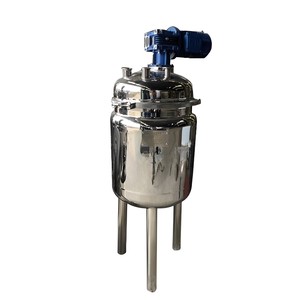
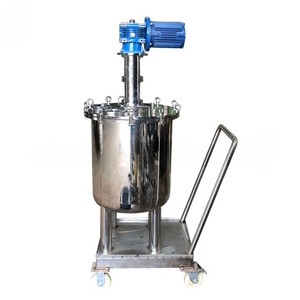



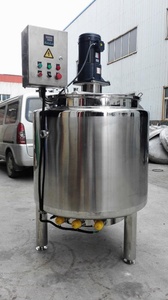





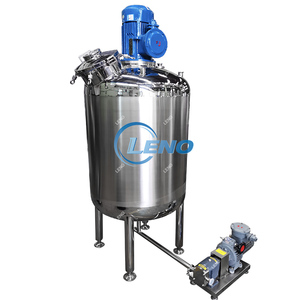








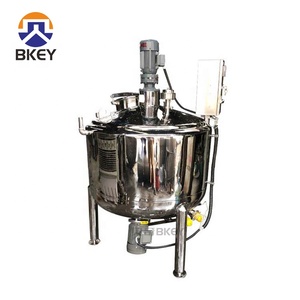




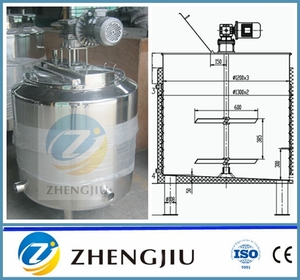

















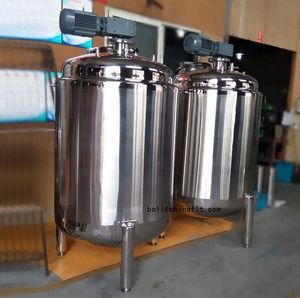


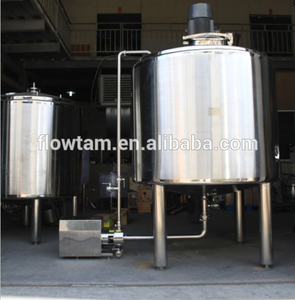






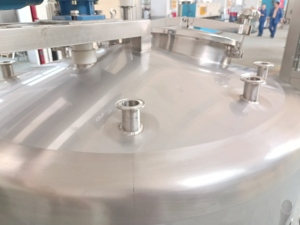

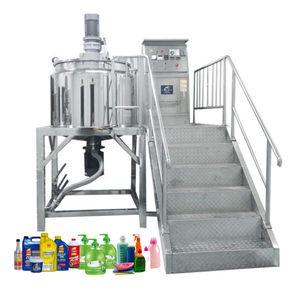

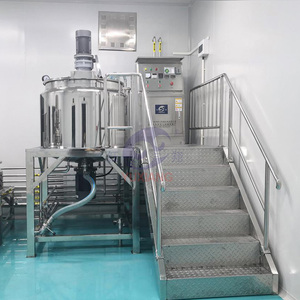
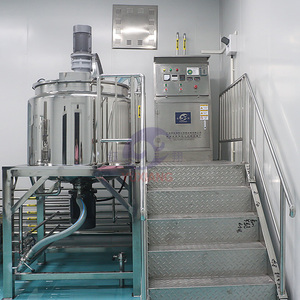
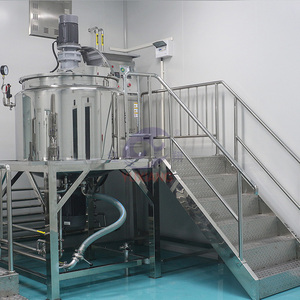






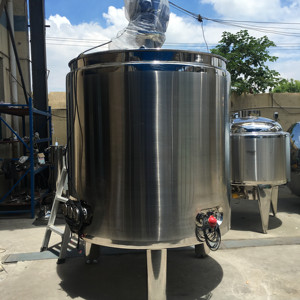

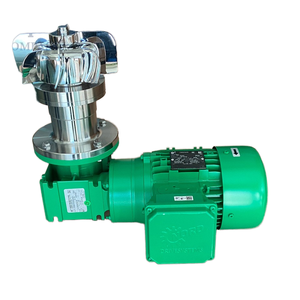













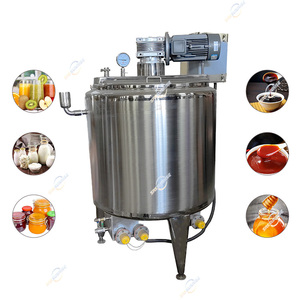

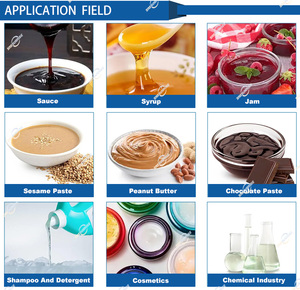
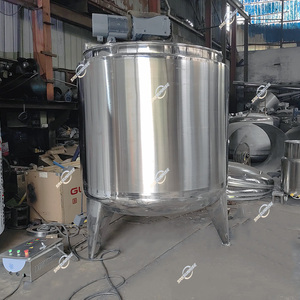

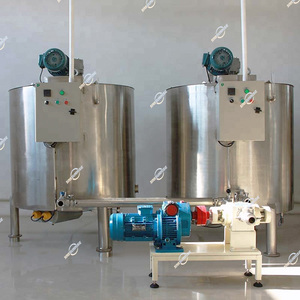

A food-grade liquid mixing tank is an industrial container made with food-grade material. It is often used in the food processing industry to hold and mix food ingredients. Chovm.com offers several types of food-grade mixing tanks to retail and wholesale buyers.
Food-grade mixing tanks, such as the food-grade stainless steel mixing tank, are ideal for mixing liquids and solid materials. They are made with food-grade stainless steel that complies with food safety standards. Mixing tanks with a jacketed design offer temperature control by circulating coolant or heated liquids through jackets surrounding the tank. This feature is particularly useful for applications that require precise temperature regulation. Heated mixing tanks have built-in heating systems, such as electric coils or steam bonds, to heat the contents directly within the tank. These tanks are suitable for applications that require cooking, pasteurizing, or sterilizing food ingredients. Vacuum mixing tanks have vacuum systems that remove air from the tank to prevent oxidation. This feature can help extend the shelf life of food products. Mixing tanks with mobile casters allow the tank to be moved easily from one workstation to another. These mixing tanks are ideal for businesses with limited space or those that require flexibility in their operations.
When purchasing food-grade mixing tanks, buyers should consider the type of tank, such as a homogenizer mixing tank, an emulsion mixing tank, or a foam mixing tank. They should also consider the capacity of the mixing tank and the material of the mixing tank. The material influences the level of hygiene required and the food additive to be processed.
Capacity:
Food grade mixing tanks are available in various sizes, from small (10-100 liters) to medium (100-1000 liters), large (1000 liters and above) capacities. The fantastic thing about these tanks is that business owners can choose a size that suits their needs perfectly.
Materials:
Food-grade mixing tanks are made of stainless steel (SS). Create mixing tanks that can withstand high temperatures, corrosive substances, and chemical reactions. The food-grade mixing tank is characterized by a rigorous hygiene standard, and the materials used must comply with these standards.
Mixing System:
The type and design of the mixing system may vary depending on the purpose of the food-grade mixing tank. It may include helical stirrers, dispersion discs, and other structures. Additionally, mixing systems may have different speeds and power that can be adjusted to meet specific requirements.
Heat Transfer:
Some food-grade mixing tanks are also equipped with heat exchange systems that can heat or cool the food in the tanks. This temperature control is achieved through the heat exchange plates or pipes in the tanks.
Safety Features:
Food-grade mixing tanks often have some safety features, such as pressure relief valves, leakage protection, and others, to ensure the safety of the tanks during operation.
Pre-Use Check:
A pre-use inspection is required for food-grade mixing tanks. The inspection should include looking for signs of damage, corrosion, or leakage. In addition, users need to make sure that food residue from the last use has not been left in the tank and that all parts are securely fastened.
Regular Cleaning:
Proper cleaning and maintenance of food-grade mixing tanks are essential to preventing tank contamination and ensuring food safety. Regular cleaning is required based on the usage of the food-grade mixing tank and the type of food it handles. Bacteria can quickly multiply and put users' health at risk if food residues are allowed to remain in the tank. Remember to use food-grade cleaning agents and sterilizing agents for mixing tanks, ensuring that the cleaning agents meet food safety standards.
Pay Attention to Lubrication:
The mixing tanks' bearings, seals, and other moving parts need to be lubricated regularly. Lubrication can help to reduce friction and wear and to provide protection and prolong the service life of the mixing tanks.
Mixing tanks with agitators are used in the following industries.
Food and beverage
Food and beverage businesses use mixing tanks to produce and hold liquids like juices, sauces, soups, dairy products, and fermented foods (like yogurt, cheese, or probiotics). They mix raw materials, flavorings, additives, and nutritional ingredients. Food-grade mixing tanks with good sealing and controllable fermentation conditions can be used for the growth and reproduction of specific microorganisms in food. This can help improve food's shelf life, flavor, and nutritional value. Food and beverage businesses also use mixing tanks to store liquids like preservatives, marinades, etc., before they're bottled or packed.
Chemical industry
Food-grade mixing tanks can also be applied to some chemical industries. Food-grade mixing tanks with food-safe materials are suitable for chemicals that need to avoid contamination during the mixing process. For example, some flavors and food additives need chemical-grade mixing tanks to ensure that they are not polluted by mixing tanks.
Pharmaceutical industry
Pharmaceuticals use mixing tanks to mix liquid medicines, nutritional formulas, health products, etc. The mixing tanks can uniformly mix different ingredients, additives, flavoring, preservatives, etc. Mixing tanks can also be used in the fermentation process in the pharmaceutical industry. Some active ingredients (like antibiotics, amino acids, vitamins, etc.) are produced through microbial fermentation. These mixing tanks are fitted with specific fermentation equipment and controllable automatic systems to create suitable conditions for microbial growth and reproduction. Pharmaceuticals also use mixing tanks to prepare and store liquid formulations (like syrups, emulsions, etc.). They mix active ingredients, excipients, flavoring, coloring agents, etc.
Cosmetic industry
Cosmetics may use some food-grade mixing tanks for liquids that need to change forms, such as creams, emulsions (milk-like emulsions, oils, and emulsions), perlucidity solutions, etc. Besides, some food-grade mixing tanks with fermentation functions may be used to produce probiotic products.
Determine the purpose of the mixing tank:
It is important to know the application of the food-grade mixing tank. Different processing requirements will have distinct demands on the function of mixing tanks. For example, the industry demands temperature control, which calls for heating and cooling jackets. Conversely, fermenting food and beverage industries require airtight mixing tanks.
Choose the right material based on usage:
Mixing tanks with various food-grade materials have distinct advantages and disadvantages depending on the applicability of the industries. For example, glass-fused-to-steel mixing tanks are resistant to rust, corrosion, and high temperatures. On the other hand, epoxy-coated mixing tanks are low in cost and suitable for non-high-temperature requirements.
Determine the power source:
When choosing the food mixing tank, it is necessary to ensure that the mixing tank's operating power is consistent with the connection conditions of the use site. For example, in food processing sites, food-grade gasoline mixing tanks are preferable, while electric mixing tanks are used in locations that can guarantee electric power.
Decide the mode of mixing:
Depending on the food processing industry, customers can choose the kind of mixing method suitable for their process. For instance, many industries need to mix a variety of solid and water; hence, a solid suspension food-grade mixing tank is required. Likewise, some industries only involve the mixing of fluids require the mixing of liquid mixing tanks.
Determine the installation and maintenance costs:
Many food processing enterprises are huge, and the number of food mixing tanks required is vast. Selecting food-grade mixing tanks at this time will consider the installation and maintenance costs. Jacketed mixing tanks with automatic control systems can ensure the smoothness of the enterprise's production lines. Still, certain types of automatic mixing tanks are high in maintenance costs and need to be replaced by manual ones to meet the requirements.
Check the supplier's certification and support:
When choosing a food-grade mixing tank, it is important to consider the supplier who provides it. The seller needs to have the relevant certification to ensure that the mixing tank is eligible and meets the application requirements. At the same time, the seller should also provide comprehensive and considerate after-sales services to help customers solve problems more quickly during use.
Q1: When should buyers get glycol mixing tanks?
A1: Buyers should get a liquid mixing tank with a glycol jacket when they are dealing with products that require temperature control to ensure the proper functioning of the product.
Q2: What is the difference between an emulsion mixing tank and a colloid mixing tank?
A2: A colloid mixing tank is used for larger particles, while an emulsion mixing tank is used for small particles to achieve a uniform quality. Moreover, some specific additives are usually included in an emulsion mixing tank to stabilize the emulsion.
Q3: What are some trends in food-grade mixing tanks?
A3: Some current trends in food-grade mixing tanks include the rise of eco-friendly tanks, mobile tanks, nano tanks, custom tanks, and smart technology.
Q4: Do mixing tanks come with attachments?
A4: Food processing mixing tanks can come with a variety of attachments. Some of the commonly found attachments are mixing blades, heating elements, cooling jackets, scraping paddles, sanitary valves, flow meters, pressure gauges, and insulation.